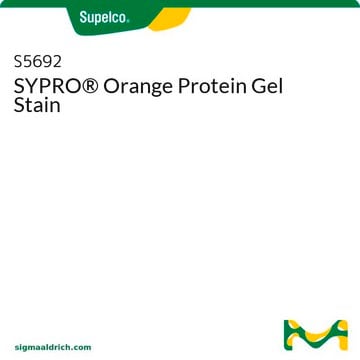ISB1L
InstantBlue™
Ultrafast Protein Stain
Synonym(s):
protein gel stain, protein stain
About This Item
Recommended Products
manufacturer/tradename
ISBT
technique(s)
protein staining: suitable
storage temp.
2-8°C
General description
Application
Components
Other Notes
Legal Information
related product
Signal Word
Warning
Hazard Statements
Precautionary Statements
Hazard Classifications
Eye Irrit. 2 - Met. Corr. 1 - Skin Irrit. 2
Storage Class Code
8A - Combustible corrosive hazardous materials
WGK
WGK 1
Certificates of Analysis (COA)
Search for Certificates of Analysis (COA) by entering the products Lot/Batch Number. Lot and Batch Numbers can be found on a product’s label following the words ‘Lot’ or ‘Batch’.
Already Own This Product?
Find documentation for the products that you have recently purchased in the Document Library.
Customers Also Viewed
Articles
Cell lysis challenges and protein extraction variables for Western blot sensitivity and reproducibility.
Cell lysis challenges and protein extraction variables for Western blot sensitivity and reproducibility.
Cell lysis challenges and protein extraction variables for Western blot sensitivity and reproducibility.
Cell lysis challenges and protein extraction variables for Western blot sensitivity and reproducibility.
Our team of scientists has experience in all areas of research including Life Science, Material Science, Chemical Synthesis, Chromatography, Analytical and many others.
Contact Technical Service







